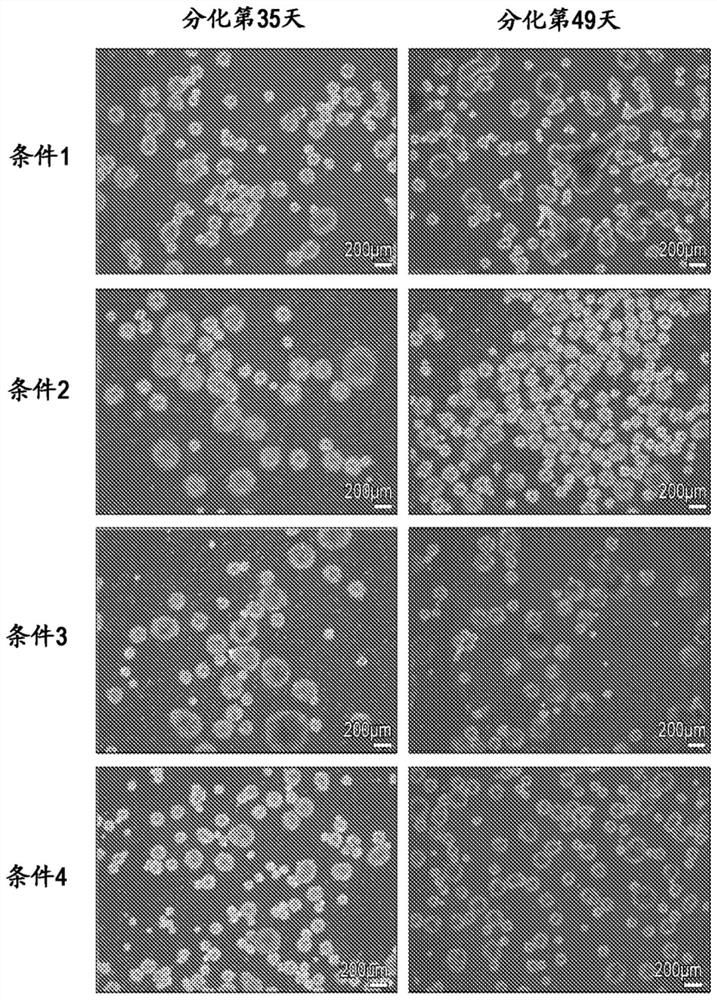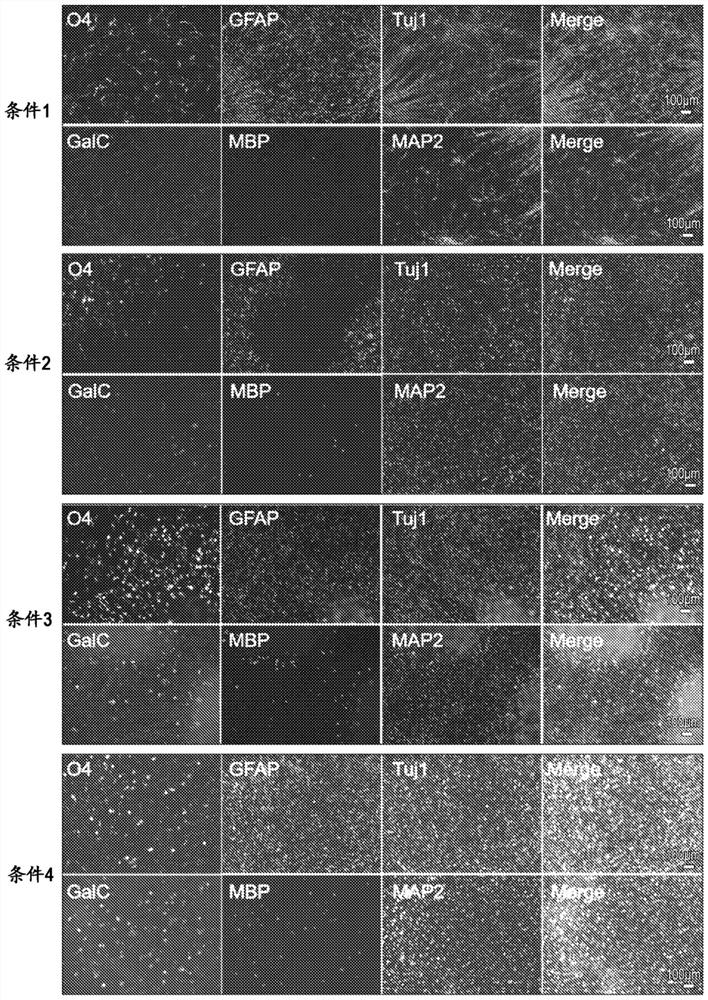Method for producing cell aggregate comprising glial precursor cells
A technology of precursor cells and aggregates, applied in the field of cell aggregates
- Summary
- Abstract
- Description
- Claims
- Application Information
AI Technical Summary
Problems solved by technology
Method used
Image
Examples
preparation example Construction
[0186] [Method for preparing cell aggregates including glial precursor cells]
[0187] As one embodiment of the method for producing a cell aggregate containing glial precursor cells of the present invention, a production method including the following steps can be mentioned:
[0188] In step (1), in the embryoid body formation medium containing more than one SMAD signal transduction inhibitor and more than one Wnt signal transduction activator, in the absence of feeder cells, the pluripotent stem cells are cultured in suspension 5 days to 10 days, thus forming cell aggregates;
[0189] In step (2), the cell aggregates obtained in step (1) are suspended and cultured in an embryoid body formation medium containing retinoic acid;
[0190] In step (3), the cell aggregates obtained in step (2) are suspended and cultured in an embryoid body formation medium or a neuroglial proliferation medium containing retinoic acid and more than one SHH signal transduction activator; as well a...
Embodiment 1
[0416]
[0417] As the iPS cell line, the QHJI01s04 strain, which is a clinical-grade peripheral blood-derived feeder-free iPS cell line established by the Kyoto University iPS Cell Research Institute, was used. Before differentiation, culture was maintained in StemFit (registered trademark) AK03N medium (manufactured by Ajinomoto Co., Inc.) supplemented with laminin 511E8 fragment (iMatrix-511E8; manufactured by Nippi. Inc.) (0.5 mg / ml) .
[0418] To induce the differentiation of iPS cells into neural progenitor cells, a rapid aggregate serum-free suspension culture method (SFEBq method) was used to form embryoid bodies. Specifically, the maintained cultured QHJI01s04 strain was isolated into individual strains using 0.5×TrypLE Select (manufactured by Thermo Fisher Scientific) / 0.25 mM EDTA (ethylenediaminetetraacetic acid) / PBS (phosphate-buffered saline, manufactured by Thermo Fisher Scientific). Cells were inoculated on a 96-well low-adsorption culture plate (trade name: ...
Embodiment 2
[0434]
[0435] To investigate gene expression changes during differentiation induction, RNA-sequencing-based gene expression analysis was performed on differentiation-induced intermediates. Using the QHJI01s04 strain, induction of differentiation was started by the method of Condition 3 in Example 1, and using the RNeasy Plus Mini Kit (manufactured by QIAGEN) from before differentiation (iPS cell line), on the 7th day of differentiation, on the 14th day, on the 21st day, on the day Total RNA was extracted from the 35-day-old cells, and a library was prepared using Illumina's TruSeq Stranded mRNA Library Prepkit, and HiSeq 2500 was used for 80 cycles of sequencing. Gene expression analysis based on data of more than 30 million reads per cell ( Figure 3A-3D ).
[0436] Comparing the gene expression profiles before induction of differentiation (iPS cells) and the 7th day of differentiation, the expression levels of NANOG and POU5F1 (OCT3 / 4), which are markers of pluripotency...
PUM
| Property | Measurement | Unit |
|---|---|---|
| diameter | aaaaa | aaaaa |
Abstract
Description
Claims
Application Information
 Login to View More
Login to View More - R&D
- Intellectual Property
- Life Sciences
- Materials
- Tech Scout
- Unparalleled Data Quality
- Higher Quality Content
- 60% Fewer Hallucinations
Browse by: Latest US Patents, China's latest patents, Technical Efficacy Thesaurus, Application Domain, Technology Topic, Popular Technical Reports.
© 2025 PatSnap. All rights reserved.Legal|Privacy policy|Modern Slavery Act Transparency Statement|Sitemap|About US| Contact US: help@patsnap.com



